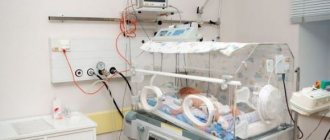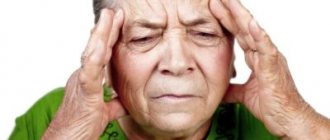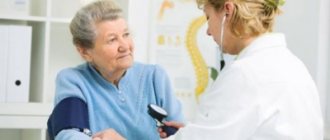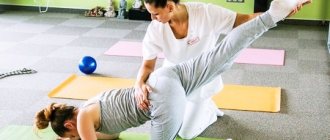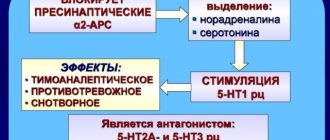I have seen a thousand times philanthropists who came to an orphanage to donate a pack of diapers, stood over a paralyzed child and exclaimed: “But how could his mother abandon him? Mother?! Your child!?”
Anyone who has been in a car accident, broken an arm, got divorced, quit their job, knows that there are moments when denial is stronger than anything in the world Tweet this quote And she didn’t believe at that moment that this was her child. She didn't believe it was a child at all. At that moment she didn’t believe in anything at all. Denial is stronger.
A thousand times I have seen relatives or even doctors exclaim over a neglected three-year-old child with cerebral palsy: “But where was the mother looking? Why didn’t you examine and treat?”
And for a year she could not believe that the child needed to be examined and treated. Denial is stronger.
Anyone who has been in a car accident, broken an arm, got divorced, or been fired knows that there are times when denial is stronger than anything else. An ancient defense mechanism.
Bargain
But some time passes. The mother can no longer deny the obvious - the child is sick. However, she cannot fully acknowledge the serious illness, it is too painful. And then she starts bargaining. With everyone in the world - with doctors, with relatives, with God.
And then she starts bargaining. With everyone in the world - with doctors, with relatives, with God Tweet this quote This feeling is also familiar to you. If you've ever had major surgery, you've most likely bargained with the anesthesiologist the day before and insisted on subdural anesthesia instead of general anesthesia. Not because subdural anesthesia is better, but because you were scared.
And if you've ever been unexpectedly fired from work, you most likely went out to a cafe with friends that same evening. Not because a friendly drinking session helps you find a new job, but because you should receive some kind of bonus from the universe for the misfortune that happened to you.
And if your close relative fell ill with cancer, then you went to church and lit a candle for his health. Not because suppositories help against cancer. You were just bargaining with God.
The mother of a child with cerebral palsy behaves the same way at the bargaining stage. She takes the child to the holy spring, expecting a miraculous healing in her heart. She gets involved in charity work, becomes an activist in Internet forums, collects money for other sick children, secretly hoping that the Lord will save her child because she cares about others. Of all the possible rehabilitation courses, she chooses the most expensive and most difficult to achieve, secretly hoping that the world will appreciate her sacrifice and take pity on her, who dragged a child in a wheelchair to the ends of the world on three planes.
Sometimes she subconsciously cheats, bargaining for bonuses for herself. He arranges rehabilitation courses for the child so that one is in Croatia, another in Hungary, a third in Germany, and a fourth in China. Because he loves to travel. And secretly from herself, she allows herself to travel, imagining travel as a necessary measure for the rehabilitation of a child.
Sometimes she buys herself an expensive car. Even being a very poor person, he gets into debt and buys a Porsche Cayenne. She explains, of course, that to transport a disabled child she simply needs a super-comfortable and super-safe car. And it is impossible at this moment to explain to her that this is a bargain. That she writes herself a bonus for suffering. Just like on the day you broke up with your ex-husband, it was impossible to explain to you that you don’t need to buy yourself an expensive dress with your last money.
It takes time for the mother of a sick child to realize that God does not bargain with her, does not provide compensation for the baby’s illness, and does not perform miracles in exchange for pilgrimages and candles.
Realizing this, the woman gets angry.
Anger
At the stage of anger and aggression, the mother of a sick child is angry with everyone. To the husband who left. At the mother-in-law, who grumbles that she “gave birth to a freak.” For friends who stopped coming to visit. On neighbors who, seeing a child in a wheelchair, take their healthy children away from the playground.
This feeling should be familiar to you too. In moments of despair, you, too, probably attacked people with or without reason. Now multiply the maximum despair you know by a thousand.
In fairness, it must be said that the mother of a child with cerebral palsy often does have reason to be angry with others. Husbands do leave often. Grandmothers often grumble instead of helping. Indeed, neighbors often take their healthy children away from playgrounds when they see a child with cerebral palsy. Doctors are often inattentive and incompetent. Officials are indifferent. The owners of rehabilitation centers are greedy. The stage of pathological aggression that every mother of a child with cerebral palsy goes through is prolonged and fueled by people around her, because they really often behave like scoundrels.
But even if you try to help, the mother of a sick child will still yell at you for the slightest reason. For example, for hugging her child but not kissing her.
You just have to endure it. The mother of a sick child will soon get tired of lashing out at everyone around her. And fall into utter despair.
Cerebral palsy: can it be cured and how to achieve the best result
Prepared by: MedWeb
Cerebral palsy: can it be cured and how to achieve the best result
Cerebral palsy: can it be cured and how to achieve the best result
Changes in the central nervous system that lead to the formation of cerebral palsy (CP) cannot be cured, but this does not mean that a child with cerebral palsy cannot be helped.
discuss in the cerebral palsy community
Cerebral palsy, cerebral palsy, cerebral palsy and other paralytic syndromes, infants (1 month - 1 year)
The brain of a child in the first year of life has enormous potential to compensate for acquired damage. As a result, it is extremely important to suspect or make a diagnosis during this period of his life. Under suitable conditions, the function of dead cells is taken over by cells from undamaged parts of the brain. The child’s brain is very plastic; even children with severe forms of the disease, with persistent rehabilitation work, can demonstrate good and sometimes surprising results.
As soon as the diagnosis is established, you need to take treatment and rehabilitation measures. All children, even with the same form of cerebral palsy, differ from each other, both in terms of motor skills and in terms of mental development and adaptive capabilities. For example, some children require a wheelchair to get around, while others have only slight unsteadiness when walking. Therefore, it is very important to develop an individual rehabilitation program that is most suitable for your child.
A team of doctors must determine the child’s characteristics: a neurologist, an orthopedist, a physical therapist, a physiotherapist, a speech therapist, and a psychologist. If a child has epilepsy or epileptic changes on the EEG, an epileptologist is involved in the development of a rehabilitation program.
The greatest effect is achievable only if a pediatrician, neurologist, orthopedist, physiotherapist, ophthalmologist, teacher, psychologist, speech therapist and other specialists work together.
For full rehabilitation, close cooperation between doctors and parents is necessary: parents cannot achieve acceptable results without the knowledge and experience of doctors, and the work of doctors will not be effective without the daily painstaking work of parents and constant work with the child.
Rehabilitation of cerebral palsy is stressful not only for the child, but also for the whole family, since this process is very long and labor-intensive. Firstly, it will be necessary to conduct several courses of inpatient or outpatient complex treatment per year. In addition, while at home, the child will also need your care and daily hard work, since the main principle of rehabilitation is continuity and constancy. Be prepared for the fact that after one course of treatment the child will not get up and walk, but only some changes will appear, barely noticeable to others, but very significant for the child, be it an increase in muscle strength, motivation, or even the emergence of a new skill, for example , crawling. It is important to understand that the entire family will need to support the child during treatment.
There is no universal pill to cure a child with cerebral palsy. However, there are various types of restorative treatment (see below), which together, with constant influence, can improve the child’s condition and realize his potential: both physically and mentally and emotionally. By the way, drug treatment is not given the main role.
Symptoms of cerebral palsy usually become less obvious if intensive rehabilitation therapy is started in a timely manner. The expected result of such treatment is the enrichment of the child’s physical and mental capabilities and improvement of his quality of life. After all, the goal of our efforts is for the child to be able to move independently and serve himself, and possibly receive a specialty with subsequent social activity in society.
As mentioned above, the best strategy for treating cerebral palsy is working as a team. During the treatment process, close interaction between parents and the attending physician and exchange of information about the child is necessary. Doctors, educators and parents should observe the child together: this is how the best result is achieved. As practice shows, treatment is most effective in a multidisciplinary or specialized clinic, where specialists from different fields of medicine work with the child.
The table below shows what each specialist's role is in your child's care.
| Specialist | Role in the treatment of cerebral palsy |
| Pediatric neurologist | − leads a team of doctors, solves system problems, monitors and coordinates the implementation of the rehabilitation plan − diagnoses and treats disorders of the brain and nervous system − consults with relevant specialists regarding treatment − determines the tasks of specialized specialists in the treatment process |
| Pediatric orthopedist | − diagnoses and treats specific orthopedic problems − carries out surgical treatment according to indications |
| Medical geneticist | − assesses the risk of genetic diseases, helps clarify the diagnosis and makes a prognosis for the birth of healthy offspring for you and your child |
| Medical doctor physical education | − develops and puts into practice a course of exercises to develop and maintain muscle tone − helps the child learn to walk, sit and maintain balance |
| Physiotherapist | − develops and puts into practice a course of individual electro-, hydro- and balneotherapy depending on the characteristics of the child |
| Specialist in occupational therapy | − teaches the child the motor skills needed to perform daily activities such as getting dressed or writing |
| Speech therapist | − works with children who have difficulty swallowing and speech disorders |
| Social worker | − helps the child and his parents join the team and master educational programs |
| Psychologist | − diagnoses the presence and degree of intellectual deficit in a child − conducts therapy designed to minimize the stress associated with the treatment of cerebral palsy |
| Teacher | − advises on educational issues related to cerebral palsy − determines the child’s education program as part of the medical-pedagogical commission |
| Epileptologist (according to indications) | − diagnoses and prescribes treatment for epilepsy − determines the possibilities and boundaries of rehabilitation treatment for a child with epilepsy |
Provided timely, ongoing and correct treatment is started, many people with cerebral palsy can live independently, efficiently and socially active. According to statistics, as a result of such rehabilitation, approximately a quarter of children with cerebral palsy have a mild form of this disease, which is expressed in slight difficulties when walking. Half of children with cerebral palsy have moderate impairments, which require constant care throughout their lives. Another quarter of patients suffer from the most severe form of cerebral palsy: in this case, they cannot walk independently. However, all patients with cerebral palsy should receive education, feasible professional guidance and social adaptation.
The main methods used to treat children with cerebral palsy:
· Kinesiotherapy: physical therapy, massage, Vojta gymnastics
· Conductive pedagogy: simultaneous stimulation of the child’s motor and mental activity
· Mechanotherapy - exercises on simulators, Lokomat, Atlant, Phaeton, Adelie suits, etc.
· Physiotherapeutic treatment: electrotherapy, magnetotherapy, laser therapy, phototherapy, thermal, water procedures
· Acupuncture, support stimulation
· Occupational therapy: allows you to develop skills necessary for everyday life (dressing yourself, performing hygiene procedures, etc.)
· Speech therapy: helps with swallowing problems and speech problems
· Orthopedic placement (splints, splints) to prevent the formation of pathological postures and contractures
· Selection of mechanical aids (wheelchairs, walkers)
· Drug therapy: prescribed to normalize muscle tone, treat epilepsy, mental disorders
· Surgical operations: to correct deformities in joints, bones, ligaments
· Neurosurgical operations to eliminate spasticity.
Source:
Methodological recommendations for parents about cerebral palsy, developed by the Scientific and Practical Center for Child Psychoneurology of the Moscow Department of Health.
The material used photographs belonging to pandaland.kz
Despair
What depression is is understood only by people who have experienced it or seen it closely - patients, relatives of patients and psychiatrists. We often say, “I'm depressed,” meaning, “I'm sad.”
Often it is a sick and helpless child who helps the mother overcome depression. She just has to get up and change the baby's diaper. Tweet this quote No, depression is not “sad.” This is a hundred thousand million times sad. Black. No hope. Complete loss of strength. Death seems like a release. You don't commit suicide just because you can't move your arm.
The mother of a child with cerebral palsy at the stage of depression lies silently in the fetal position, turning towards the wall. And you have to be the last brute to tell her at this moment: “Stop lying around, take care of the child.”
As a rule, she needs professional help. Treatment with antidepressants. And at a minimum - care, love, support, help with housework... And yes - someone should look after her child while she lies with her face turned to the wall.
Paradoxically, it is often the sick and helpless child who helps the mother overcome depression. She simply has to get up and change the baby's diaper.
GMFCS Motor Function Scale
Photo: Deacon Andrei Radkevich
Cerebral palsy has different degrees of severity. Since 1997, all European doctors have followed a single classification system for global motor functions. Unfortunately, in Russia it was officially adopted only in 2014. In this classification, the potential of children with cerebral palsy is divided into V levels of motor functions, and each level is further divided into age periods: 1.5-2 years; 2-4 years; 4-6 years; 6-12 years old and 12-18 years old.
Using this scale, you can determine the level of motor disorders as early as one and a half years. And when the doctor sets the level of motor functions, the classification system prescribes all stages of child development up to 18 years of age.
The movement develops according to its own laws. If a child has level I movement, established at one and a half years old, he has a 100% chance of mastering independent walking by the age of 2 years. If a child is assigned level II, it means he has a chance to go independently before the age of 4.
If a child has a level III-V impairment of motor functions, then such a child will not walk independently, but children of level III can go with additional means of rehabilitation, children of level IV will be able to sit with support. Level V is for bedridden children who can only hold their head up.
You can read more about the scale in the article “GMFCS: Will My Child Walk?”
Adoption
One day she gets up. With a clear head. With a calm understanding of what is happening. She now sees that yes, her child has special needs, but she now loves these special features, just as any mother loves the special features of her child - the shape of the eyes, the color of the hair, the manner of distorting words. She understands that the child cannot be completely cured, but, nevertheless, the child can be helped. Teach to hold your head, sit, stand, maybe even walk. Speak or at least use non-verbal communication methods. Read or at least watch cartoons. Live an independent life or at least eat independently, at least have an afternoon snack.
